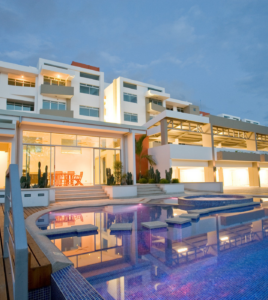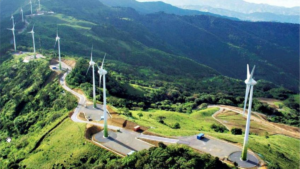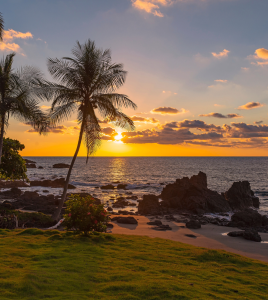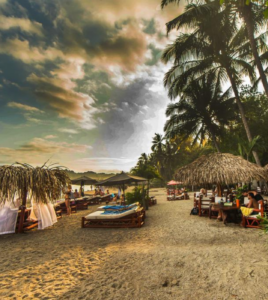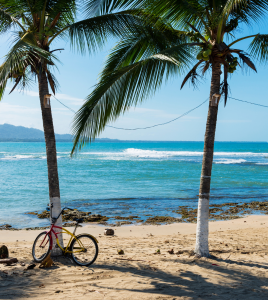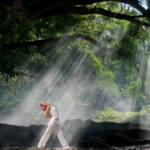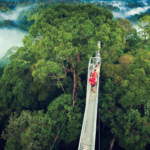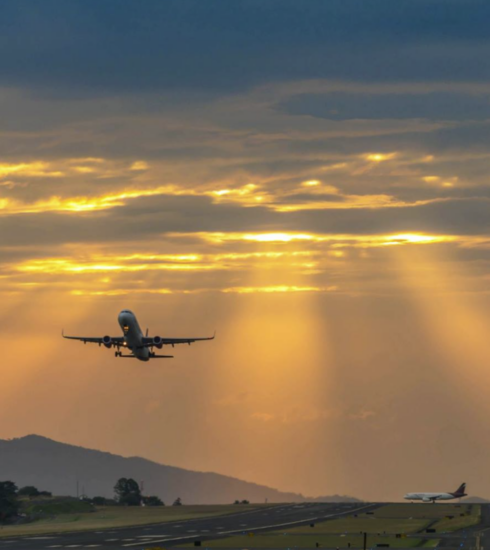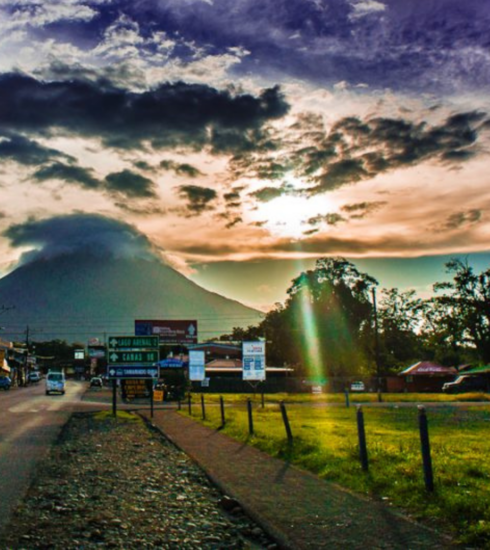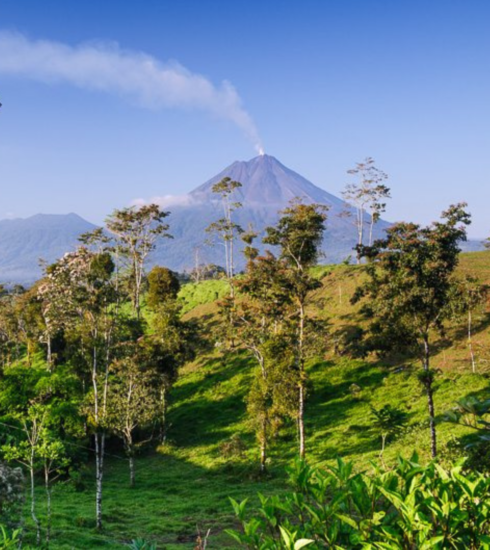An endless summer of surf spots

Costa Rica is paradise found.
Costa Rica is home to some of the best waves on the planet, crashing along beaches that are clean and blissfully empty. Explore to find sandy beaches that are white, tan, dark brown, and black – to compliment the rocky points, rivermouths, reefs, and offshore islands which help make Costa Rica an essential surf destination.

- It’s geography makes it perfect to easily explore it’s two coastlines — the Caribbean and the Pacific — which both produce great waves and have essential surf spots.
- The Caribbean side has a short surfing season and produces large swells from tropical storms off Mexico. The Pacific coast has smaller but more consistent surf generated by low pressure systems located off New Zealand.
In the ’70s, Central America began to attract U.S surfers, looking for exotic waves close to home. Costa Rica was perfect – it was possible to be surfing endless world class spots with a choice of two very different coastlines – Fast forward to today and Costa Rica offers something for everyone making this a true surfer’s paradise.
Explore the surf of Costa Rica
Costa Rica is a diverse tropical country built for the surfing enthusiast looking for the ultimate adventure – from volcanoes to cloud forests to coral reefs, supporting 5% of the world’s biodiversity and temperatures which stay in the mid 80’s to low 90’s!
From beginner to advanced, there is a wave for everyone along one of Costa Rica’s hundreds of beaches.
With the name Costa Rica meaning the “rich coast”, it certainly lives up to its name by having some of the best surfing destinations in the world.
Get off the plane near San Jose you can take a bus, rent a car or truck, or find a shuttle to get you to almost anywhere in the country within six hours. The surf spots in the far north and south and are not easily accessible by vehicle so these spots stay relatively uncrowded. Even though Surfers arrive all year from all over the world – the amazing Costa Rica surf options which run for miles can spread them out and allow you to find your own slice of The Essential Costa Rica surf paradise.
Learn MorePLAYA GUIONES, NOSARA
Having over 300 days a year of surfable waves makes Playa Guiones one of the most consistent surfing spots in all of Costa Rica. With a sandy bottom beach break the waves are often small enough for beginners to learn on. But don’t fool yourself; when the bigger swells come in only experienced surfers are recommended to take to the water. Not only does Nosara provide excellent surfing conditions, it is located on the coast of a blue zone where people live the longest, happiest, healthiest lives in the world. The chance to surf in high and low tide, average water temperature of 83°F, and the cleanest water in Costa Rica makes Playa Guinones the perfect choice for a day of riding the waves. Explore Nosara, Costa Rica
PLAYA TAMARINDO, TAMARINDO
Perhaps the most widely known surf spot along the Pacific Coast is Tamarindo. Consistent swells, offshore winds, long sandy beaches, and reefs makes this area well known. Not only does Tamarindo offer the main beach in the center of town but offers two other surf spots within five minutes. Playa Grande is located across the river mouth and is easily paddled too. Here you will find the most consistent waves in the area. Playa Langosta offers the experienced riders a fast moving left and right point break and is only a 15 minute walk from Tamarindo. The streets are lined with restaurants, hotels and surf camps; and the waters are always filled with waves. It’s no wonder why so many flock to this sunny destination. Explore Tamarindo, Costa Rica
LITTLE HAWAII, PLAYA AVELLANAS
One of Costa Rica’s best kept secrets, this surf spot is for experts only. With offshore waves that can reach up to eighteen feet this destination is not for the faint of heart. Located on a reef, Little Hawaii is best surfed at low tide. South of Little Hawaii sits El Parqueo where the surf breaks long and smooth and less experienced surfers can try their luck. Important to note is that Avellanas is not accessed by public transit and don’t plan on staying in a fancy hotel here, this town is only serviced by a few cabanas, laid back hotels and surfer retreats. Do plan on seeing a couple howler monkeys, a local pig named Lola and visiting the famous beach bar; also called Lola’s.
PLAYA HERMOSA, JACO
Home of the International Quicksilver Championship where hundreds of experts flock to every August, it’s no wonder Playa Hermosa has made this list. Located just south of the busy tourist town of Jaco lays this 10km stretch of black sand beach. With strong currents and swells that reach up to thirteen feet, this beach is not recommended for swimming. From April to November when the tide is high and rising, the experienced surfer will relish in these swells. With a beach that is less crowded than Jaco due to swimming conditions, a turtle nesting sanctuary and a number of economical surf rental shops lining the beach; this spot is one of our favorites places to visit.
SALSA BRAVA, PUERTO VIEJO
The waves of the Caribbean can be fast and dangerous, making Puerto Viejo an excellent place to surf. Salsa Brava, the heaviest wave in Costa Rica resides in Puerto Viejo and experts from around the world come to try their hand at this Hawaiian style wave. A steep wave that drops you straight into the barrel; this wave requires you to be quick on your feet not to get stuck in the middle. Notoriously wild and challenging this wave sits on a sharp shallow reef. Only the brave dare to take this on and when you do succeed and are riding inside the tube you can be sure you’re part of a special club that’s defeated this wave.
PAVONES, COSTA RICA
A town that exists entirely for the surfing population, Pavones offers a ride that will take you the entire length of the village. Known for having the second longest left-hand surf break on the planet this is a spot you don’t want to miss out on. Located far off the beaten path and the best surfing to be had in the rainy season, getting to Pavones is not always easy. Once there, you’ll find yourself sitting in the local restaurant watching highlights on the projector screen from the day before, riding the wave that can last up to two minutes and swapping stories with the locals. Pavones is truly for the surfer that will travel to the farthest ends of the country to ride an epic wave.
PLAYA NARANJO
Widely known as “Witches Rock” this is yet another spot that is not for the faint of heart. Not to be confused with Playa Naranjo the town, this beach is lined with golden sand and a large rocky formation located off the shore which is where the name Witches Rock came from. Located inside Santa Rosa national park and therefore having no accommodations available besides camping; surfers often boat to Witches Rock and ride the waves for a few hours before turning around. Witches Rock offers experienced surfers a fast, powerful and hollow wave that can be attempted anytime but low tide. Despite the saltwater crocodiles and sharks, this spot remains hugely popular with surfers from around the globe.
MAL PAIS
What once began as a small fishing village has now developed into a laid back, year round wave surfing destination. Made up of Playa Carmen, Santa Teresa and Mal Pais, this destination offers up waves for every type of surfer. As a beginner make your way to Playa Carmen for a long stretch of sand and a break that keeps waves under three feet. For the more experienced surfer; head to Santa Teresa where rocky outcroppings that extend into the sea, beach breaks, point breaks and high swells will create heavy barrels. After working up a thirst, head into the Nativo Sports Bar for a cold Imperial or refreshing Margarita. White sand beaches, plenty of surf shops who offer up lessons, rentals and camps along with some of the best sunsets Costa Rica has to offer, Mal Pais should be on your to do list!
PLAYA NEGRA
Made famous from being featured in the popular surf movie “Endless Summer II”, Playa Negra offers up some of the best surfing in Costa Rica. Surfers beware though, this destination tends to get very busy in the water as the take off zone for riding the waves is quite small. Most surfers tend to ride during high tide as low tide exposes the rocks that hide beneath the water. If you dare to ride during low tide, hang on as you race through the fast perfect tubes. Famous for its right hand barrels, consistent year round swells, small tide pools that form along the shore and laid back lifestyle; you will understand after one visit why so many surfers call this place home.
PLAYA DOMINICAL
Located on the southern pacific coast of Costa Rica, this sleepy laid back town boats some of the most consistent waves in this region. Powerful and hollow waves are formed by a beach break of surf that runs the entire length of the beach. Avoid low tide when the waves close out in very shallow water and be aware of the jellyfish and stingrays that line the area. Despite the strong riptides and currents; this town offers up remarkable surfing with many other beach breaks located within 10kilometers. Surf camps, rental shops and local restaurants line the streets and with over four kilometers of beach, lush landscapes and waves for beginners and experts; this town offers something for everyone.
THE CARIBBEAN
For those surfing on the Caribbean coast, keep in mind that the surfing season doesn’t last long, and most of the waves are produced by tropical storms off the Mexican coast. However, these storms produce some of the biggest waves in the country and should only be attempted by veteran riders.
NORTH PACIFIC COAST
The North Pacific Coast is encompassed by the Guanacaste Province and is the country’s most visited region. However, this area, home to some of the best and most easily accessible diving and surfing spots, is also one of Costa Rica’s least populated regions.
CENTRAL PACIFIC COAST
This region is the most easily accessible, just a short distance from San Jose. The resort towns offer a bit more nightlife than the other coasts, and the surf here is fantastic, making Central Pacific the place for a more lively vacation.
SOUTH PACIFIC COAST
Unlike the Central Pacific Coast, the South Pacific is home to some of the largest last remaining stretches of Pacific Coastal rainforests. This is the coast surf if you’re only packing a wetsuit, a board and a sleeping bag — you’re surfing with Madre Nature.

